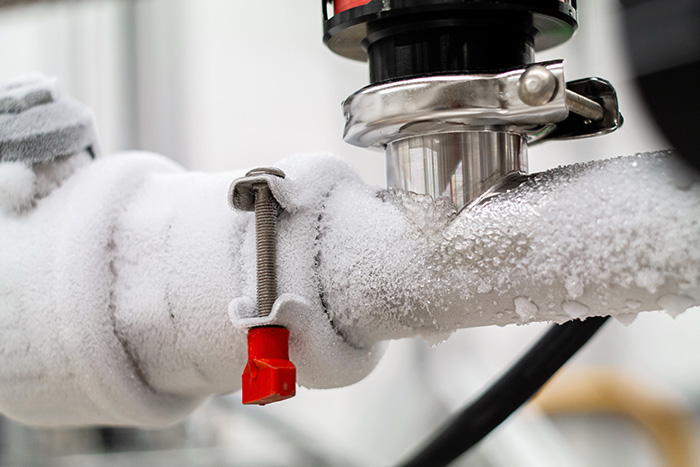Avoid Frozen Pipes in Winter: Professional Strategies
Avoid Frozen Pipes in Winter: Professional Strategies
Blog Article
Were you in search of critical info about 6 Ways to Prevent Frozen Pipes?

Cold weather can ruin your plumbing, specifically by freezing pipelines. Here's just how to prevent it from occurring and what to do if it does.
Intro
As temperatures decrease, the risk of frozen pipelines boosts, potentially resulting in pricey repair services and water damage. Understanding just how to avoid frozen pipelines is essential for home owners in chilly climates.
Comprehending Frozen Pipelines
What causes pipelines to freeze?
Pipelines ice up when subjected to temperature levels below 32 ° F (0 ° C) for expanded periods. As water inside the pipelines ices up, it broadens, putting pressure on the pipeline wall surfaces and potentially triggering them to break.
Risks and problems
Icy pipes can lead to supply of water disturbances, home damages, and expensive fixings. Ruptured pipelines can flooding homes and cause extensive structural damages.
Signs of Frozen Piping
Identifying frozen pipelines early can prevent them from rupturing.
Just how to identify frozen pipelines
Search for reduced water circulation from taps, unusual odors or noises from pipes, and noticeable frost on exposed pipes.
Prevention Tips
Protecting prone pipelines
Cover pipelines in insulation sleeves or utilize warmth tape to secure them from freezing temperatures. Concentrate on pipes in unheated or external locations of the home.
Home heating methods
Keep indoor areas sufficiently heated, especially locations with plumbing. Open up closet doors to enable cozy air to distribute around pipelines under sinks.
Securing Outdoor Pipes
Garden tubes and outside taps
Disconnect and drain pipes garden hoses before winter months. Install frost-proof faucets or cover exterior faucets with shielded caps.
What to Do If Your Pipelines Freeze
Immediate actions to take
If you presume icy pipes, keep taps open to alleviate stress as the ice melts. Use a hairdryer or towels soaked in warm water to thaw pipes slowly.
Long-Term Solutions
Architectural modifications
Consider rerouting pipes away from exterior walls or unheated locations. Add additional insulation to attic rooms, basements, and crawl spaces.
Upgrading insulation
Buy premium insulation for pipelines, attic rooms, and walls. Proper insulation aids maintain consistent temperatures and minimizes the danger of icy pipes.
Final thought
Stopping icy pipes needs proactive measures and fast feedbacks. By recognizing the reasons, indications, and safety nets, property owners can protect their pipes during winter.
5 Ways to Prevent Frozen Pipes
Drain Outdoor Faucets and Disconnect Hoses
First, close the shut-off valve that controls the flow of water in the pipe to your outdoor faucet. Then, head outside to disconnect and drain your hose and open the outdoor faucet to allow the water to completely drain out of the line. Turn off the faucet when done. Finally, head back to the shut-off valve and drain the remaining water inside the pipe into a bucket or container. Additionally, if you have a home irrigation system, you should consider hiring an expert to clear the system of water each year.
Insulate Pipes
One of the best and most cost-effective methods for preventing frozen water pipes is to wrap your pipes with insulation. This is especially important for areas in your home that aren’t exposed to heat, such as an attic. We suggest using foam sleeves, which can typically be found at your local hardware store.
Keep Heat Running at 65
Your pipes are located inside your walls, and the temperature there is much colder than the rest of the house. To prevent your pipes from freezing, The Insurance Information Institute suggests that you keep your home heated to at least 65 degrees, even when traveling. You may want to invest in smart devices that can keep an eye on the temperature in your home while you’re away.
Leave Water Dripping
Moving water — even a small trickle — can prevent ice from forming inside your pipes. When freezing temps are imminent, start a drip of water from all faucets that serve exposed pipes. Leaving a few faucets running will also help relieve pressure inside the pipes and help prevent a rupture if the water inside freezes.
Open Cupboard Doors
Warm your kitchen and bathroom pipes by opening cupboards and vanities. You should also leave your interior doors ajar to help warm air circulate evenly throughout your home.

Hopefully you enjoyed reading our piece on How to prepare your home plumbing for winter weather. Thanks so much for finding the time to read our article post. I beg you take a moment to promote this article if you enjoyed it. We enjoy your readership.
Free Estimate Report this page